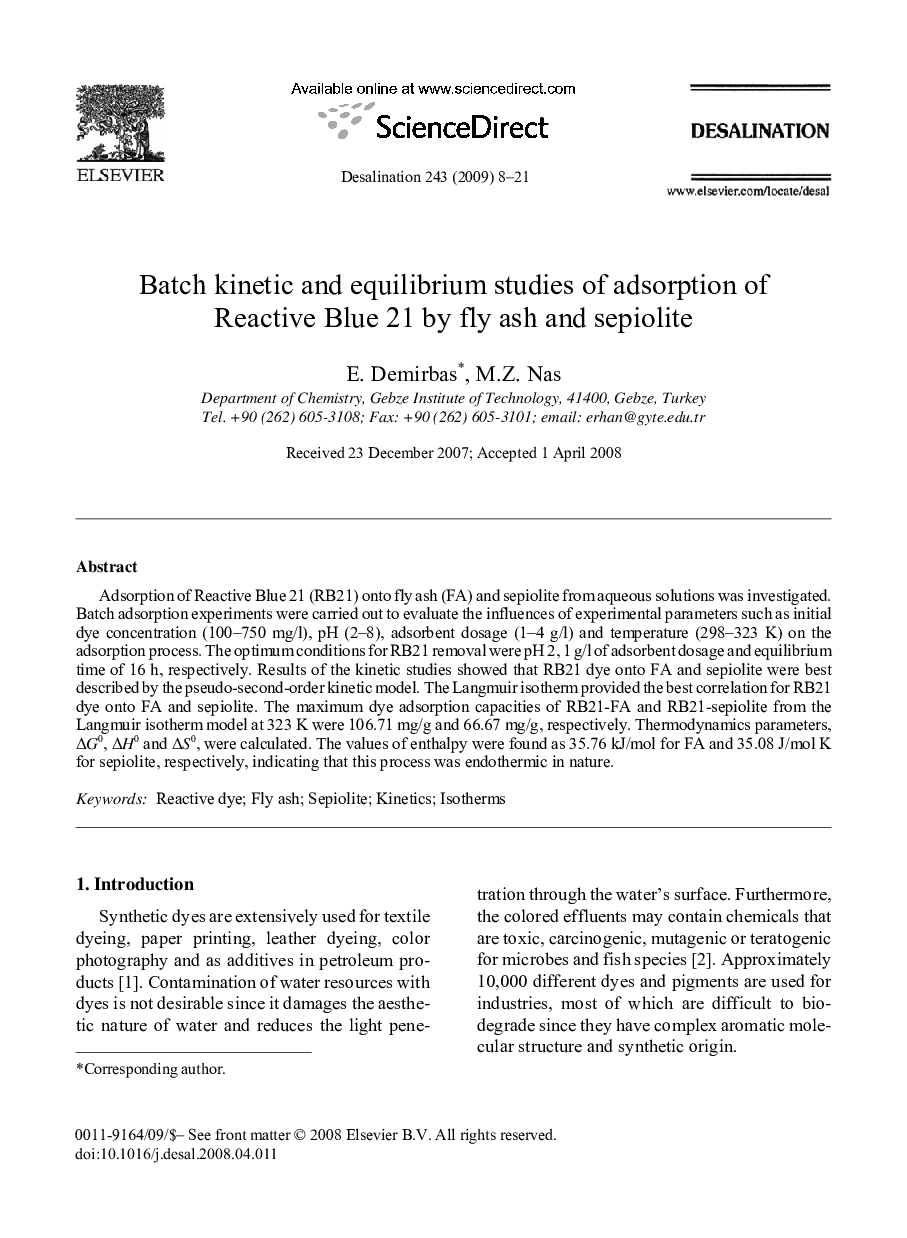| Article ID | Journal | Published Year | Pages | File Type |
|---|---|---|---|---|
| 626736 | Desalination | 2009 | 14 Pages |
Adsorption of Reactive Blue 21 (RB21) onto fly ash (FA) and sepiolite from aqueous solutions was investigated. Batch adsorption experiments were carried out to evaluate the influences of experimental parameters such as initial dye concentration (100–750 mg/l), pH (2–8), adsorbent dosage (1–4 g/l) and temperature (298–323 K) on the adsorption process. The optimum conditions for RB21 removal were pH 2, 1 g/l of adsorbent dosage and equilibrium time of 16 h, respectively. Results of the kinetic studies showed that RB21 dye onto FA and sepiolite were best described by the pseudo-second-order kinetic model. The Langmuir isotherm provided the best correlation for RB21 dye onto FA and sepiolite. The maximum dye adsorption capacities of RB21-FA and RB21-sepiolite from the Langmuir isotherm model at 323 K were 106.71 mg/g and 66.67 mg/g, respectively. Thermodynamics parameters, ΔG0, ΔH0 and ΔS0, were calculated. The values of enthalpy were found as 35.76 kJ/mol for FA and 35.08 J/mol K for sepiolite, respectively, indicating that this process was endothermic in nature.
